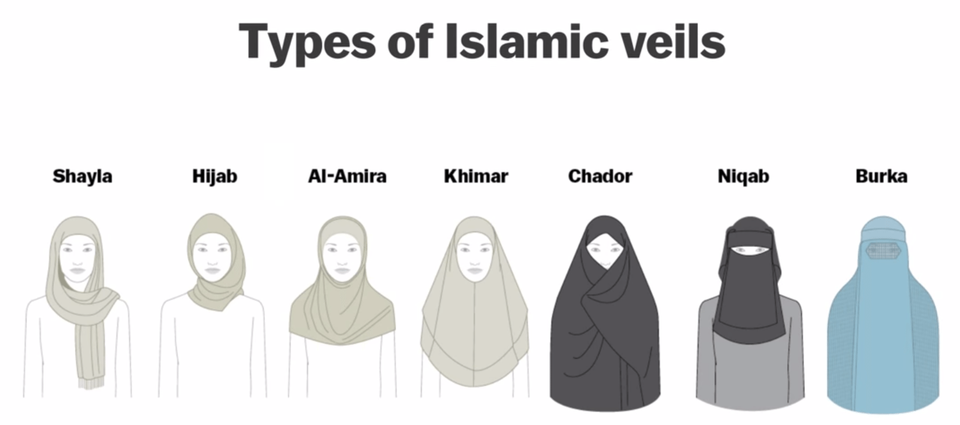Recently in Iran, a protest, called 'My Stealthy Freedom', demonstrated by hanging a hijab on a stick in a public place, has become a sensation. A hijab is a head scarf that is intended to promote the modesty of the wearer by covering their head but leaving their face free. The campaign is a reaction to the rule in society that all Iranian women must wear a hijab. A large number of Iranian women have taken on the movement by posting pictures without the covering on along with the hashtag ‘My Stealthy Freedom” Masih Alinejad, who first launched the campaign, has seen many women arrested for demonstrating on the streets. However her campaign offered many Iranian women the courage to speak up and mimetic protests popped up across the country. In Iran, women have been required to cover their hair with a hijab, regardless of their nationality or religion, when in public, since the 1979 Islamic revolution. If they disobey the law, they are fined 25 dollars and given a jail sentence of up to two months. Nevertheless, it clearly violates their freedom of choice and in a democratic society that they should also be guaranteed their own religious freedom.
 |
| ▲ Masih Alinejad, who started the campaign, is demonstrating with hijab. (Photo by The Washington Post) |
One of the reasons Iran imposes hijab on women is related to their scriptures, but women argue it is an overstatement of the scriptures. Their sacred book, the Quran states that women must lower their gaze to protect the purity and dress modestly. So headscarves were introduced to cover women's hair and encourage women to be careful about being considered impure. As a result, all kinds of hijab, Niqab and Burqa, which cover up entire bodies, are being criticized as overreactions to the meaning of the passage in the Quran. The Quran does not state that all women should wear black clothes covering all their bodies from daylight but rather that both men and women should behave modestly. In other words, technically both men and women should wear clothes that reveal only what is necessary. Nevertheless, patriarchal traditions have twisted the true meaning of this puritan religious ideology by forcing only females to wear the modest coverings. However, Iranian women are no longer willing to accept the culture of pushing the hijab on all females and are insisting on freedom from this coercion.
In Iran, the hijab is considered a central part of the nation’s ideology and after the 1979 Islamic Revolution women were required to wear the hijab, at all times, in public. Iranian hard-liners claimed that the hijab culture was part of the feminist movements as it protected Islamic women. However, in reality, Iranian women's rights groups staged protests several times, calling the hijab a symbol of oppression by Iranian priests. They called for a need to separate religion from politics, and argued it is not right for women to bear the burden of modesty alone. Moreover, since the Iranian government is not separated from religion, forcing all women to wear modest clothing and coverings leads us to identify them as people who need to be protected, the weak, and this discourages women’s rights activists to actively participate in politics.
 |
| ▲ (photo by BBC News) |
Meanwhile, there also have been requests from the global community to ban the hijab. Although in Iran the hijab is respected for its religious significance, there is a growing opinion that the more conservative the dress is, the more likely it’s to be used by criminals as a weapon. Therefore, many countries, such as France and Belgium have banned wearing the Niqab or Burqa in public places as they not only cover the hair, but also cover faces. Face veils bans are in fact becoming more common in Europe, while the headscarf is still a matter of personal choice.
Iran's President, Hassan Rohani admits many people want liberalization from the commitment to wearing a hijab in the nation but so far, he has not proposed any changes. So, the demonstrations will go on and people will continue to be arrested in the hopes of curtailing further protests. The lack of action on the matter has forced people to take their protests to social media. Every Iranian woman should have the freedom to choose wearing a hijab and should not be forced to do so due to unsubstantiated religious restraints. The Iranian compulsory hijab requirement needs to change.
윤진현 dankookherald@gmail.com

![[Campus Magnifier] Let's Surf the Library!](/news/photo/202404/12496_1765_4143.jpg) [Campus Magnifier] Let's Surf the Library!
[Campus Magnifier] Let's Surf the Library!
![[Campus Magnifier] Let's Surf the Library!](/news/thumbnail/202404/12496_1765_4143_v150.jpg)





